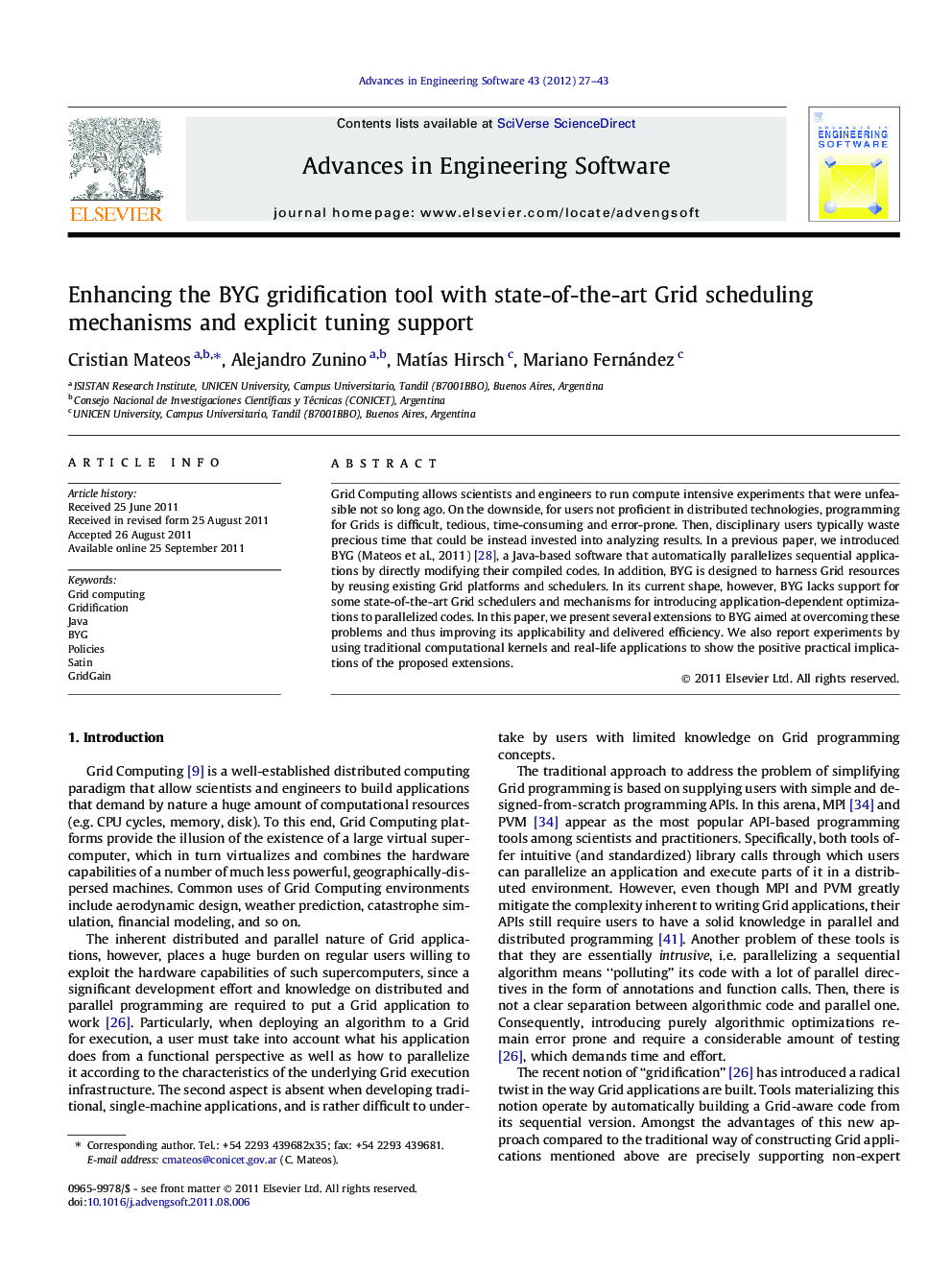| Article ID | Journal | Published Year | Pages | File Type |
|---|---|---|---|---|
| 568346 | Advances in Engineering Software | 2012 | 17 Pages |
Grid Computing allows scientists and engineers to run compute intensive experiments that were unfeasible not so long ago. On the downside, for users not proficient in distributed technologies, programming for Grids is difficult, tedious, time-consuming and error-prone. Then, disciplinary users typically waste precious time that could be instead invested into analyzing results. In a previous paper, we introduced BYG (Mateos et al., 2011) [28], a Java-based software that automatically parallelizes sequential applications by directly modifying their compiled codes. In addition, BYG is designed to harness Grid resources by reusing existing Grid platforms and schedulers. In its current shape, however, BYG lacks support for some state-of-the-art Grid schedulers and mechanisms for introducing application-dependent optimizations to parallelized codes. In this paper, we present several extensions to BYG aimed at overcoming these problems and thus improving its applicability and delivered efficiency. We also report experiments by using traditional computational kernels and real-life applications to show the positive practical implications of the proposed extensions.
► We describe BYG, a tool that automatically parallelizes compiled Java applications. ► We derive novel bytecode rewriting mechanisms to bind BYG to existing Grid schedulers. ► We propose a programming model based on policies to tune parallelized codes. ► BYG and policies are useful for easily speeding up scientific Java applications.
